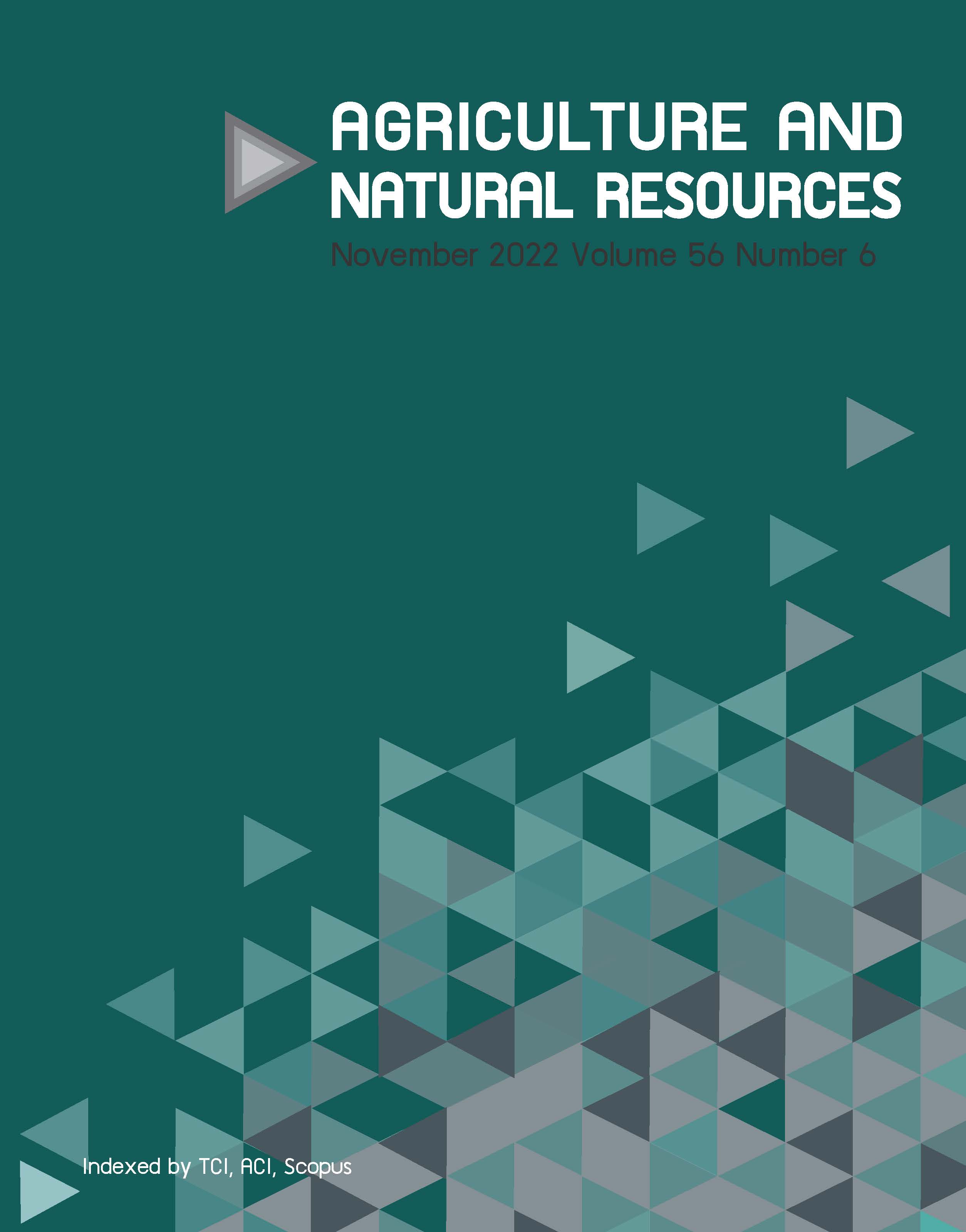A review of current fumigation practices in Thailand
Keywords:
Carbon dioxide, Fumigation, Methyl bromide, PhosphineAbstract
Importance of the work: Fumigation, as a pest management tool, plays an important role in reducing post-harvest losses and maintaining food and bio securities.
Objectives: To discuss the current state of fumigation practices in Thailand and some of the challenges faced by fumigation practitioners.
Materials & Methods: A typical fumigation job can be divided into three main steps: 1) the fumigation enclosure is constructed; 2) the fumigant is released and held within the enclosure for a certain period, called the exposure time; and 3) when the desired exposure time has elapsed, the enclosure is aerated.
Results: Phosphine in the form of aluminum phosphide tablets is the most-used fumigant. PH3 generators are used to apply these tablets, thus releasing PH3 gas more effectively. In addition, phosphine formulations in cylinders are used in niche applications. However, insects with strong resistance to phosphine are present in many areas of the country. Although methyl bromide was banned in Thailand in 2014, its use is necessary and still allowed in quarantine and pre-shipment applications. Carbon dioxide is used in the treatment of organic commodities; however, carbon dioxide fumigation is more costly and requires more gas-tight enclosures and a longer exposure time.
Main finding: To achieve successful fumigation, it is necessary to understand the advantages and limitations of these fumigants.
Downloads
Published
How to Cite
Issue
Section
License
Copyright (c) 2022 Kasetsart Universityonline 2452-316X print 2468-1458/Copyright © 2022. This is an open access article under the CC BY-NC-ND license (http://creativecommons.org/licenses/by-nc-nd/4.0/),
production and hosting by Kasetsart University of Research and Development Institute on behalf of Kasetsart University.







